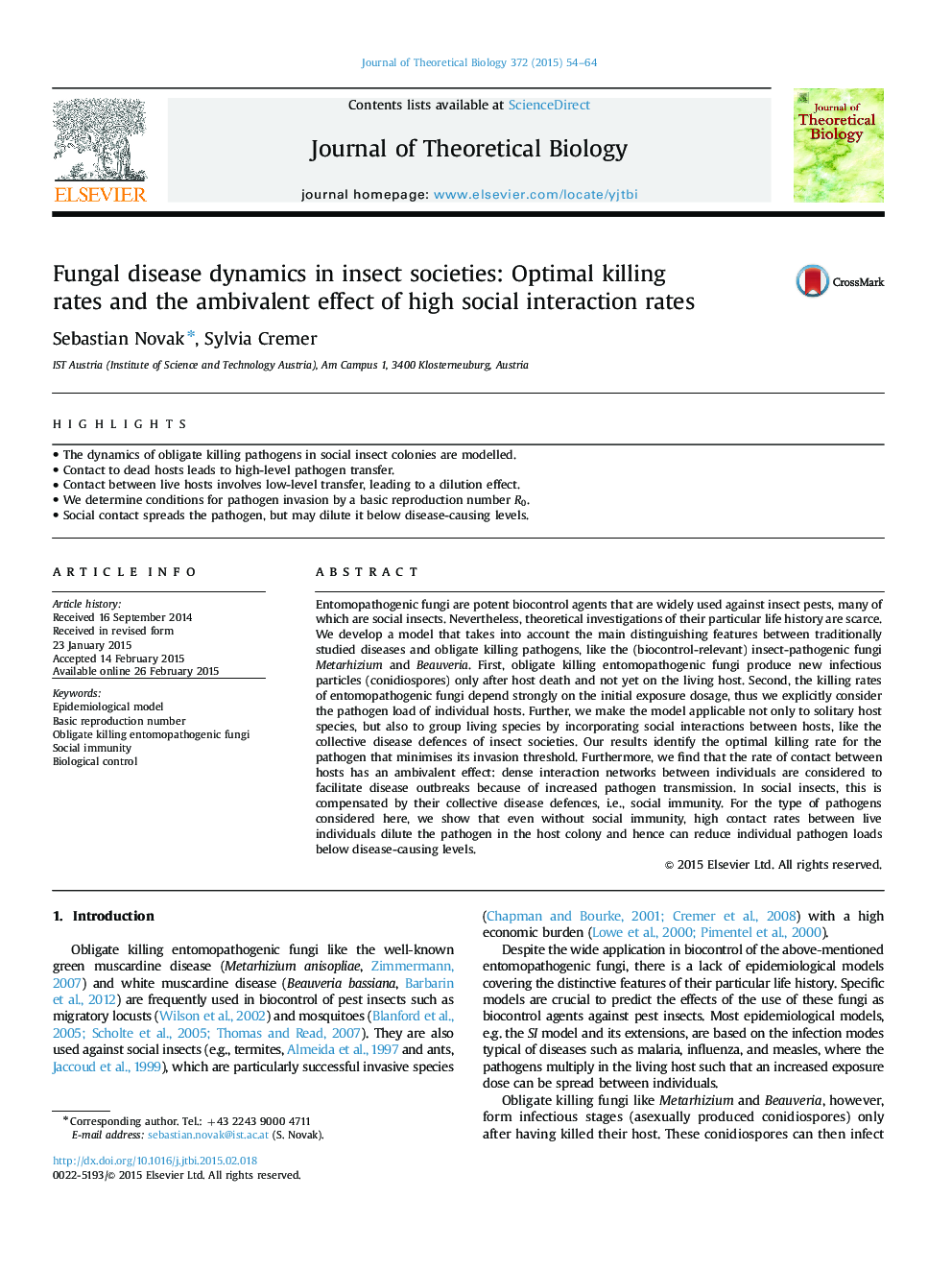| کد مقاله | کد نشریه | سال انتشار | مقاله انگلیسی | نسخه تمام متن |
|---|---|---|---|---|
| 6369808 | 1623838 | 2015 | 11 صفحه PDF | دانلود رایگان |
- The dynamics of obligate killing pathogens in social insect colonies are modelled.
- Contact to dead hosts leads to high-level pathogen transfer.
- Contact between live hosts involves low-level transfer, leading to a dilution effect.
- We determine conditions for pathogen invasion by a basic reproduction number R0.
- Social contact spreads the pathogen, but may dilute it below disease-causing levels.
Entomopathogenic fungi are potent biocontrol agents that are widely used against insect pests, many of which are social insects. Nevertheless, theoretical investigations of their particular life history are scarce. We develop a model that takes into account the main distinguishing features between traditionally studied diseases and obligate killing pathogens, like the (biocontrol-relevant) insect-pathogenic fungi Metarhizium and Beauveria. First, obligate killing entomopathogenic fungi produce new infectious particles (conidiospores) only after host death and not yet on the living host. Second, the killing rates of entomopathogenic fungi depend strongly on the initial exposure dosage, thus we explicitly consider the pathogen load of individual hosts. Further, we make the model applicable not only to solitary host species, but also to group living species by incorporating social interactions between hosts, like the collective disease defences of insect societies. Our results identify the optimal killing rate for the pathogen that minimises its invasion threshold. Furthermore, we find that the rate of contact between hosts has an ambivalent effect: dense interaction networks between individuals are considered to facilitate disease outbreaks because of increased pathogen transmission. In social insects, this is compensated by their collective disease defences, i.e., social immunity. For the type of pathogens considered here, we show that even without social immunity, high contact rates between live individuals dilute the pathogen in the host colony and hence can reduce individual pathogen loads below disease-causing levels.
Journal: Journal of Theoretical Biology - Volume 372, 7 May 2015, Pages 54-64
